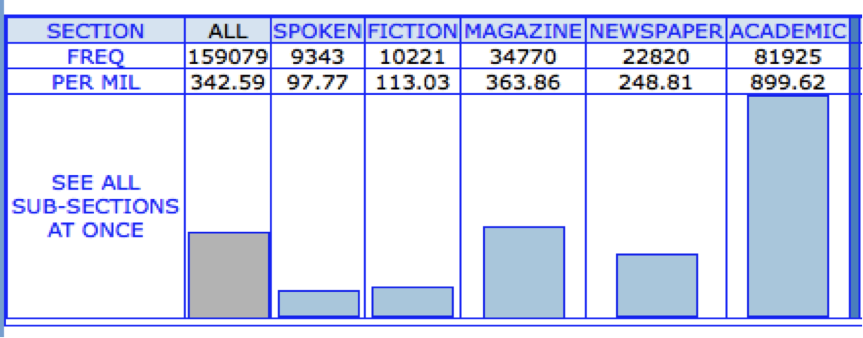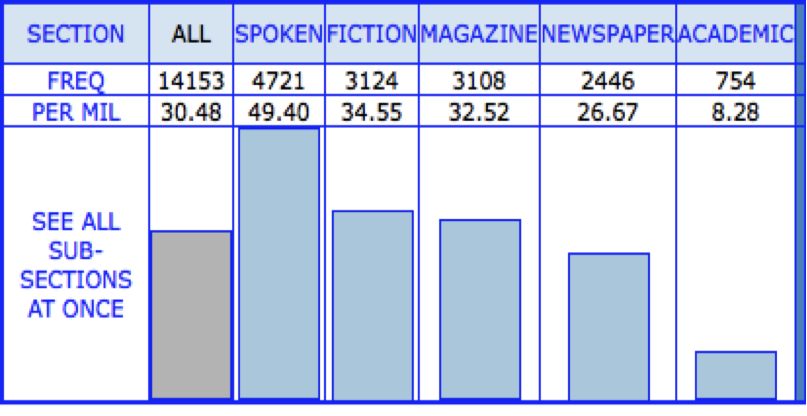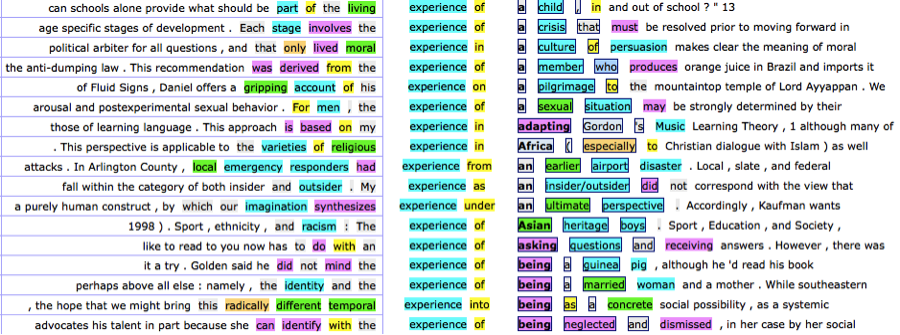View Content #18889
| Contentid | 18889 |
|---|---|
| Content Type | 3 |
| Title | Corpus-Aided Pedagogy for Language Classrooms |
| Body | Robert Poole is a PhD candidate in Second Language Acquisition and Teaching at the University of Arizona. His primary interests are technology and corpora in the classroom, L2 writing, and corpus-based discourse analysis. In addition to his experience teaching freshman writing and ESL in the U.S, he has taught in Guyana, Nicaragua, and South Korea. Follow Robert on Twitter @RobertEPoole. A corpus (pl. corpora) is a large, searchable collection of naturally occurring language that can be used by researchers, teachers, and students for a variety of purposes. Some well-known corpora are the Corpus of Contemporary American English (COCA), the British National Corpus (BNC), the Corpus del Español, and the Corpus do Português. These are large corpora that contain millions of words collected from textbooks, magazines, newspapers, television shows, etc. There are also specialized corpora such as the Michigan Corpus of Undergraduate Student Papers (MICUSP), the Time Magazine Corpus, and the Indianapolis Business Learner Corpus (IBLC) which are designed to represent a particular genre or target discourse. These corpora and others make it possible for language instructors to test hypotheses and answer questions about language use and provide authentic samples of language from a variety of contexts. In recent years, corpus findings are also influencing language learning materials (e.g. Conrad & Biber’s Real grammar: A corpus-based approach to English and Blass, Iannuzi, Savage, & Reppen’s Grammar and Beyond series) and are increasingly informing classroom pedagogy for vocabulary learning (Chambers, 2005 & 2007; Cobb, 1997 & 1999; Varley, 2009), grammar instruction (Liu and Jiang, 2009), and writing development (Friginal, 2013). These applications of corpora to language learning classrooms have been aided by the creation of corpora in many different languages and tremendous growth in user-friendly websites such as wordandphrase.info and SkELL (Sketch Engine for language learning) that provide rich learning spaces for students to explore language. In addition, students and teachers can now create their own corpora (e.g. a small corpus of student essays, letters of application, or articles from a campus newspaper) with the help of corpus tools such as Antconc (Anthony, 2014; see Charles, 2012 & 2013 for D.I.Y. corpus in the classroom). Corpus-aided pedagogy will continue to expand into language classrooms as more online corpora are developed and more instructors understand the value a corpus approach can offer. The following are a few ways corpus activities may be integrated into the classroom. 1. Comparing the use of a particular word or words between two registers or genres: For example, a writing teacher could display corpus data on how linking adverbials are used in a particular target discourse (e.g. Friginal, 2013) or how conjunctions are rarely used to begin sentences in academic writing. Image 1: Corpus data for the use of however 2. Using a corpora for revision and word choice activities: Corpora can be a valuable resource to students searching for the proper preposition to use or for deciding whether to use a phrasal verb or its one-word synonym. For example, a quick search in the Corpus of Contemporary American English (COCA) will show that phrasal verbs, e.g. figure out, is much less common in academic writing than discover. See Liu and Jiang (2009) for how to use corpora for revision activities. Image 2: figure out in the COCA Image 3: discover in the COCA
3. Determining semantic field: This type of activity asks students to compare the collocations between near synonyms. For example, students could compare the collocations of major, chief, and primary to determine the contexts where these words are most often used. Image 4: semantic fields of near-synonyms beautiful and attractive
4. Exploring grammar: Many corpora such as the COCA provide concordance lines with each word color-coded for part of speech. Searching for a word of interest and examining the color-coded results can help students notice syntactic patterns in which a word frequently occurs. Image 5: KWIC lines for experience
Additional Readings Bennett, G. (2010). Using corpora in the language learning classroom: Corpus linguistics for teachers. Ann Arbor: University of Michigan Press. Reppen, R. (2010). Using corpora in the language classroom. New York: Cambridge University Press. References Anthony, L. 2014. AntConc 3.4.3 [Computer Software]. Tokyo, Japan: Waseda University. Available from http://www.laurenceanthony.net/ Blass, L., Iannuzi, S., Savage, A., & Reppen, R. (2012). Grammar and beyond. Cambridge: Cambridge University Press. Chambers, A. (2005). Integrating corpus consultation in language studies. Language Learning and Technology, 9 (2), 111-125. Charles, M. (2012). Proper vocabulary and juicy collocations: EAP students evaluate do-it-yourself corpus-building. English for Specific Purposes, 31, 93–102. Charles, M. (2013). Getting the corpus habit: EAP students long term use of personal corpora. English for Specific Purposes, 35, 30-40. Cobb, T. (1997). Is there any measurable learning from hands-on concordancing?. System, 25(3), 301-315. Cobb, T. (1999). Breadth and depth of lexical acquisition with hands-on concordancing. Computer Assisted Language Learning, 12(4), 345-360. Conrad, S., & Biber, D. (2009). Real grammar: A corpus-based approach to English. New York: Pearson ESL. Friginal, E. (2013). Developing research report skills using corpora. English for Specific Purposes, 32, 208-220. Liu, D. & Jiang, P. (2009). Using a corpus-based lexicogrammatical approach to grammar instruction in EFL and ESL contexts. The Modern Language Journal, 93(1), 61-78. Varley, S. (2009). I’ll just look that up in the concordance: integrating corpus consultation into the language learning environment. Computer Assisted Language Learning, 22(2), 133-152. |
| Source | CASLS Topic of the Week |
| Inputdate | 2015-01-22 19:47:09 |
| Lastmodifieddate | 2015-02-02 03:11:59 |
| Expdate | Not set |
| Publishdate | 2015-02-02 02:15:01 |
| Displaydate | 2015-02-02 00:00:00 |
| Active | 1 |
| Emailed | 1 |
| Isarchived | 0 |





